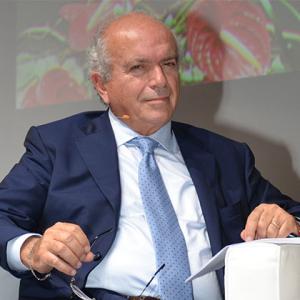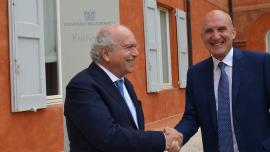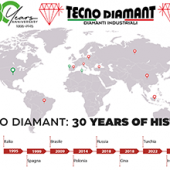The Italian ceramic tile industry weathers the storm in 2022
The Confindustria Ceramica chairman Giovanni Savorani analyses the sector’s mood and state of health. Read the interview.

According to the preliminary end-of-year results presented by Confindustria Ceramica in December, the Italian ceramic tile industry closed the year 2022 with an increase of its production (448 million sq.m, up 3% on the previous year) and sales volumes (around 458 million sqm, up 0.7% on 2021), of which some 364 million sqm was exported (+0.2%). The increase in selling prices introduced to compensate for the higher overall production costs pushed total sales revenues up 16.4% to around €7.2 billion compared to €6.2 billion in 2021. The average overall selling price rose from 13.5 €/sqm to about 15.7 €/sqm and the export price from 14.3 €/sqm to 16.7 €/sqm.
The biggest challenge faced by the Italian ceramic tile industry in 2022 in terms of costs was without question the soaring energy prices, which according to Confindustria Ceramica’s calculations placed an extra cost burden on the sector’s companies of more than €1 billion for the thermal energy component alone. These higher costs were offset not only by price adjustments but also by government incentives in the form of energy and gas tax credits.
As confirmed by Confindustria Ceramica chairman Giovanni Savorani, the resilience of exports also demonstrates that Italian products continue to be appreciated in the high-end markets:
“In a scenario in which all global producers have had to pass their higher production costs on to the market, having a high value-added product to start with has made this less problematical, at least in some markets. Overall, Italy has managed to keep the increase in its average export selling price to just 2.4 €/sqm (from 14.3 to 16.7 €/sqm), a smaller rise than many of its competitors. This has enabled us to maintain our shares and even strengthen our position in some European markets as well as in the Far East and the Gulf region. In other areas, this has simply not been possible”, he said.
Although the second half of 2022 was clearly impacted by the slowdown in global demand, at the moment there are no signs that this negative phase will become even more acute.
“For sure, global demand has contracted in general compared to a year ago, mainly due to rising inflation and the consequent slowdown in consumption that has impacted almost all economies. But this contraction has merely brought supply and demand back to the 2019 pre-Covid levels. According to several of our industry’s business leaders, the slowdown may continue until June followed by a return to a state of normality. In the meantime, companies that had emptied their warehouses are now replenishing them, while good levels of orders have been maintained in the first two months of 2023”, explains Savorani.
Read the interview published in Ceramic World Review no. 150
Did you find this article useful?
Join the CWW community to receive the most important news from the global ceramic industry every two weeks

























